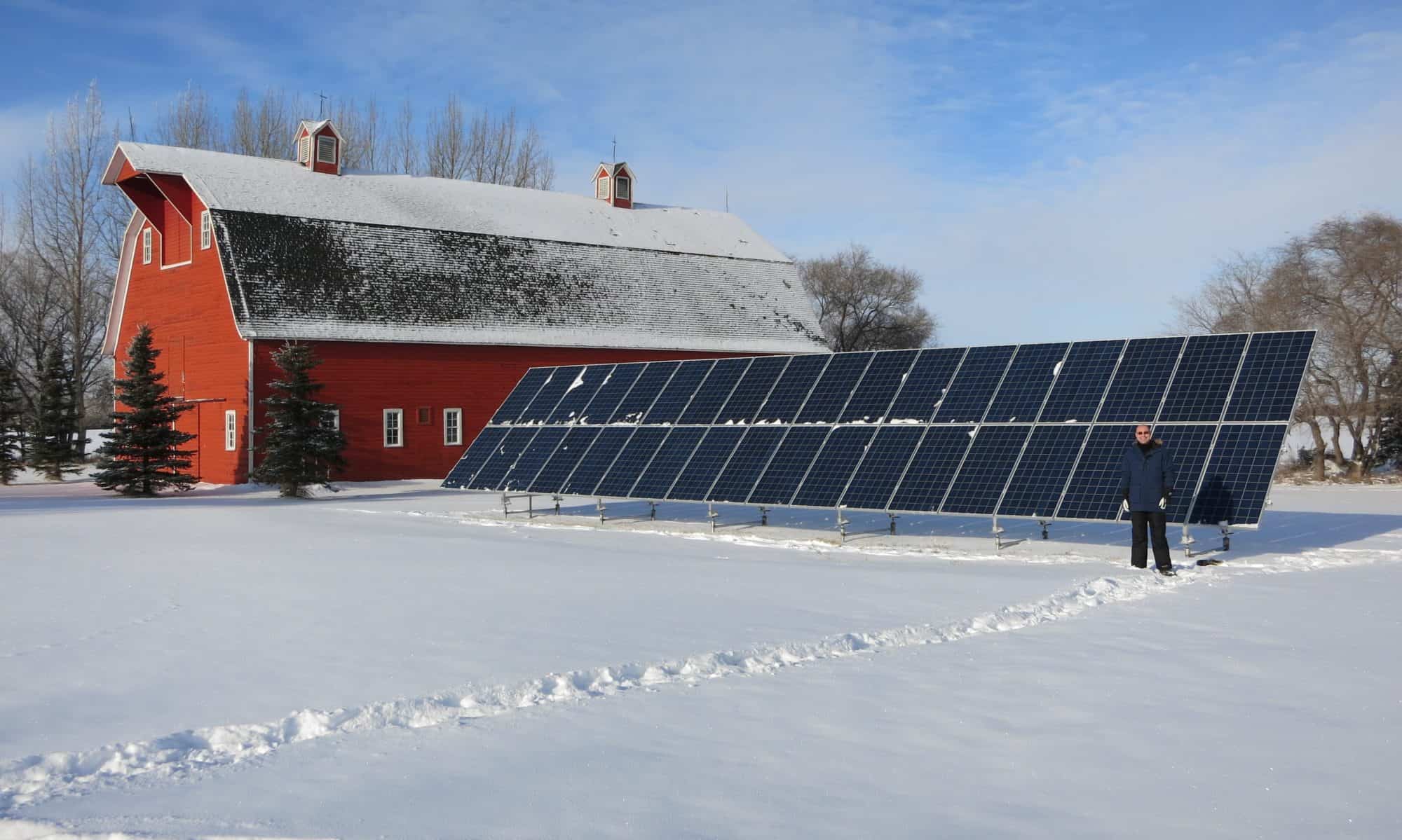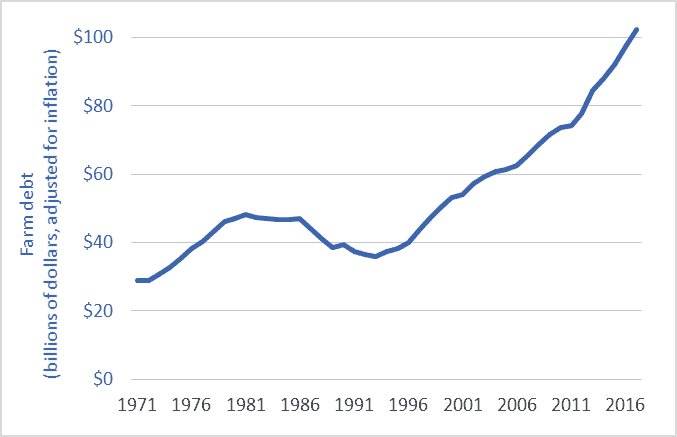Canadian farm debt has risen past the $100 billion mark. According to recently released Statistics Canada data, farm debt in 2017 was $102.3 billion—nearly double the level in 2000. (All figures and comparisons adjusted for inflation.)
Some analysts and government officials characterize the period since 2007 as “better times” for farmers. But during that period (2007-2017, inclusive) total farm debt increased by $37 billion—rising by more than $3 billion per year.
Here’s how Canadian agriculture has functioned during the first 18 years of the twenty-first century (2000 to 2017, inclusive):
1. Overall, farmers earned, on average, $47 billion per year in gross revenues from the markets (these are gross receipts from selling crops, livestock, vegetables, honey, maple syrup, and other products).
2. After paying expenses, on average, farmers were left with $1.6 billion per year in realized net farm income from the markets (excluding farm-support program payments). If that amount was divided equally among Canada’s 193,492 farms, each would get about $8,300.
3. To help make ends meet, Canadian taxpayers transferred to farmers $3.1 billion per year via farm-support-program payments.
4. On top of this, farmers borrowed $2.7 billion per year in additional debt.
5. Farm family members worked at off-farm jobs to earn most of the household income needed to support their families (for data see here and here).
The numbers above give rise to several observations:
A. The amount of money that farmers pay each year in interest to banks and other lenders ($3 billion, on average) is approximately equal to the amount that Canadian citizens each year pay to farmers ($3.1 billion). Thus, one could say that, in effect, taxpayers are paying farmers’ interest bills. Governments are facilitating the transfer of tax dollars from Canadian families to farmers and on to banks and their shareholders.
B. Canadian farmers probably could not service their $100 billion dollar debt without government/taxpayer funding.
C. To take a different perspective: each year farmers take on additional debt ($2.7 billion, on average) approximately equal to the amount they are required to pay in interest to banks ($3 billion on average). One could say that for two decades banks have been loaning farmers the money needed to pay the interest on farmers’ tens-of-billions of dollars in farm debt.
Over and above the difficulty in paying the interest, is the difficulty in repaying the principle. Farm debt now—$102 billion—is equal to approximately 64 years of farmers’ realized net farm income from the markets. To repay the current debt, Canadian farm families would have to hand over to banks and other lenders every dime of net farm income from the markets from now until 2082.
The Canadian farm sector has many strengths. By many measures, the sector is extremely successful and productive. Over the past generation, farmers have managed to nearly double the value of their output and triple the value of agri-food exports. Output per year, per farmer, and per acre are all up dramatically. And Canadian farmers lead the world in adopting high-tech production systems. The problem is not that our farms are backward, inefficient, or unproductive. Rather, the problems detailed above are the result of voracious wealth extraction by the dominant agribusiness transnationals and banks. (To examine the extent of that wealth extraction, see my blog post here).
Although our farm sector has many strengths and is setting production records, the sector remains in a crisis that began in the mid-1980s. And what began as a farm income crisis has metastasized into a farm debt crisis. Further, the sector also faces a generational crisis (the number of farmers under the age of 35 has been cut by half since 2001) and a looming climate crisis. Policy makers must work with farmers to rapidly restructure and transform Canadian agriculture. A failure to do so will mean further costs to taxpayers, the destruction of the family farm, and irreparable damage to Canada’s food-production system.


Is it even possible to compare what is happening on the majority of farms with what some farmers are doing with permaculture, agroecology, and other farming methods that are not indebted to the large corporations for all the “-sides” and seeds used. I know that worldwide much is being done, but on both sides of this farming conundrum, which does not bode well for the future of food in an increasingly urban and thus clueless society such as ours. And what about the water, the soil, the dirt, the lifeblood of all creatures, including us.